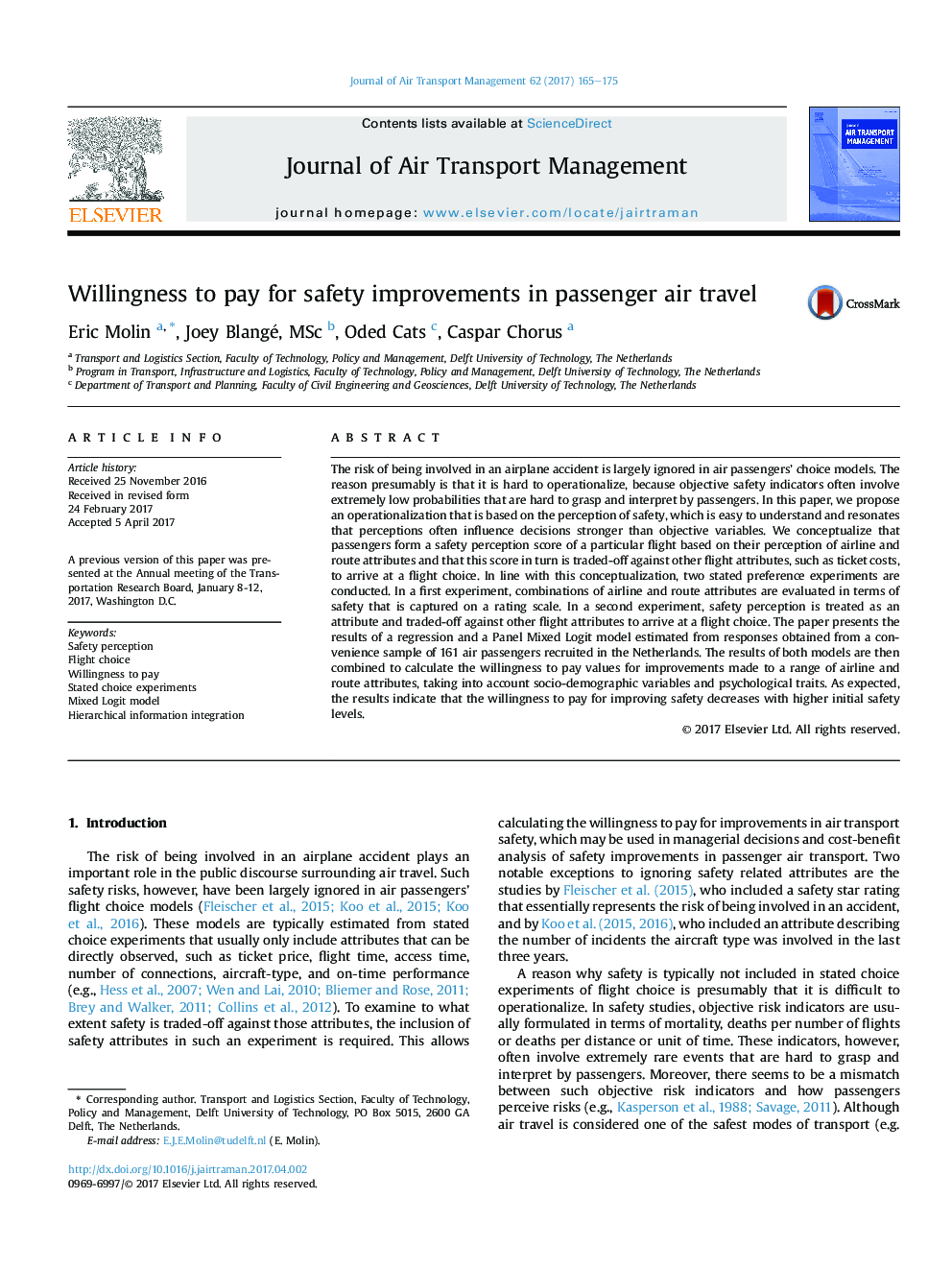| Article ID | Journal | Published Year | Pages | File Type |
|---|---|---|---|---|
| 5111474 | Journal of Air Transport Management | 2017 | 11 Pages |
Abstract
The risk of being involved in an airplane accident is largely ignored in air passengers' choice models. The reason presumably is that it is hard to operationalize, because objective safety indicators often involve extremely low probabilities that are hard to grasp and interpret by passengers. In this paper, we propose an operationalization that is based on the perception of safety, which is easy to understand and resonates that perceptions often influence decisions stronger than objective variables. We conceptualize that passengers form a safety perception score of a particular flight based on their perception of airline and route attributes and that this score in turn is traded-off against other flight attributes, such as ticket costs, to arrive at a flight choice. In line with this conceptualization, two stated preference experiments are conducted. In a first experiment, combinations of airline and route attributes are evaluated in terms of safety that is captured on a rating scale. In a second experiment, safety perception is treated as an attribute and traded-off against other flight attributes to arrive at a flight choice. The paper presents the results of a regression and a Panel Mixed Logit model estimated from responses obtained from a convenience sample of 161 air passengers recruited in the Netherlands. The results of both models are then combined to calculate the willingness to pay values for improvements made to a range of airline and route attributes, taking into account socio-demographic variables and psychological traits. As expected, the results indicate that the willingness to pay for improving safety decreases with higher initial safety levels.
Related Topics
Social Sciences and Humanities
Business, Management and Accounting
Strategy and Management
Authors
Eric Molin, Joey MSc, Oded Cats, Caspar Chorus,
